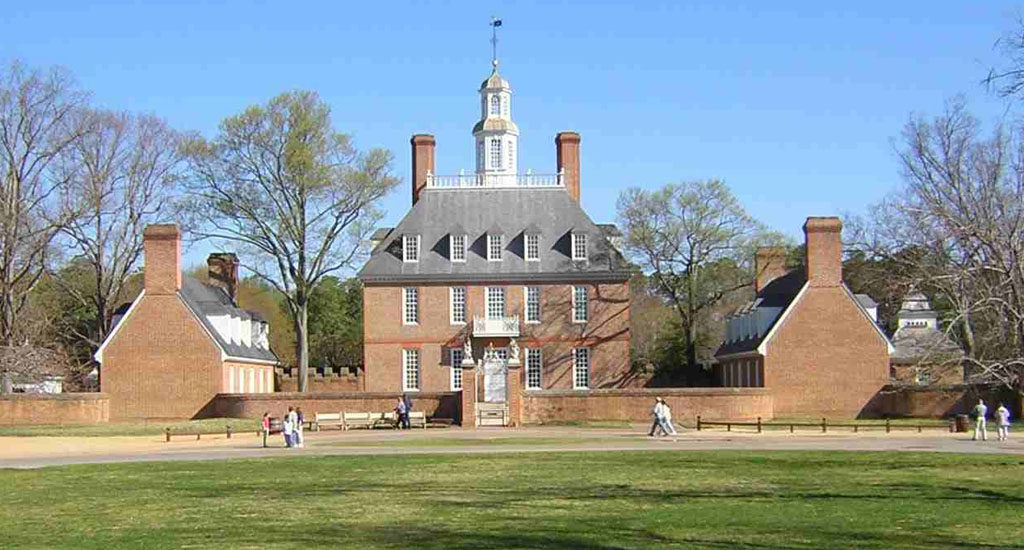For those of you who are history buffs, you have doubtlessly traveled to Colonial Williamsburg and toured the old Governor’s Mansion — a 1930s era replica of the original that burnt to the ground in the 1780s.
The interior was restored according to descriptions of the period and a tiny wooden chink that was found on site, presumably under the pretense that the foyer to the mansion was paneled in walnut or oak. After extensive research, Colonial Williamsburg has decided that this probably wasn’t the case at all:
We found that the decision to use stained walnut paneling in the Great Hall, Stairway Hall and stairway was based on a single fragment of burnt wood that had been found under a different part of the site – the ballroom – during excavations of the late 1920s. Further research of historical records including plans and paintings revealed that walls used by the British in the 18th-century to display arms were painted solid, light colors to highlight the arms themselves.
We discovered the same type of finishings in the intact arms displays at Chevening House and Hampton Court in England. We can be confident the Governor’s Palace was appointed similarly during the late 18th century.
…and so the walnut paneling will be painted in a removable (heavy emphasis — removable) white paint, based on the research performed by the Colonial Williamsburg Foundation.
This decision doesn’t appear to be without its numerous detractors, mostly in the best comments section in America at the moment. For instance:
Of course it should be noted that black walnut (juglans Nigra) is grown only in the Eastern U.S. The paneling you mention is likely deal, not walnut, and deal has been traditionally painted. If it followed that all paneling was painted then why is the red oak paneling in Randolph House not painted? Was Peyton Randolph any less English than the Palace undertaker? Much of southern paneling is long leaf pine or yellow pine, a wood that normally requires painting. So to compare painted black walnut paneling in America with painted deal paneling in English manors is just plain wrong. In admitting that 1) the original design was based on a fragment actually found in the Palace. Foundation, and 2) that a mistake in color was made not only on the Palace but in other period properties based purely on conjecture, might the current decision to paint American Black Walnut be equally conjecture and then it follows that the current analysis made be flawed and as such the project be set aside until better proof is found.
An interesting subplot, to which Colonial Williamsburg’s Matt Webster responds:
The Palace is a reconstruction and while we have a lot of information regarding what it looked like, it is not complete. In these instances we must weigh the information at hand to make the best possible decisions. In the case of Peyton Randolph, it is an original structure and we can conduct analysis in our conservation laboratories to determine the paint history and makeup. Unfortunately we do not currently have enough information to make a decision regarding the oak paneling. In this case it is best to do nothing.
So was the interior paneled in walnut? More than likely. Was it painted any color other than white? We simply don’t know, other than based on conjecture and some interesting forensics made by Colonial Williamsburg.
The good news is that the paneling will be entirely preserved by the paint itself. Moreover, what’s more fascinating is the willingness of Colonial Williamsburg to “get it right” over the course of time, rather than settle for what is and a perhaps too rigorous fidelity to the suppositions of the past.
The restoration will begin on January 15th and continue until January 26th, where it will reopen for public view on Saturday, January 27th. If you’d like to read more comments from others, go check out the Colonial Williamsburg Friends page on Facebook (and give it a like while you’re there!)
UPDATE: Mark St. John Erickson over at the Daily Press has a great write up from Friday’s paper, one that is far more intensive than anything over at the CW blog. Worth the read.
